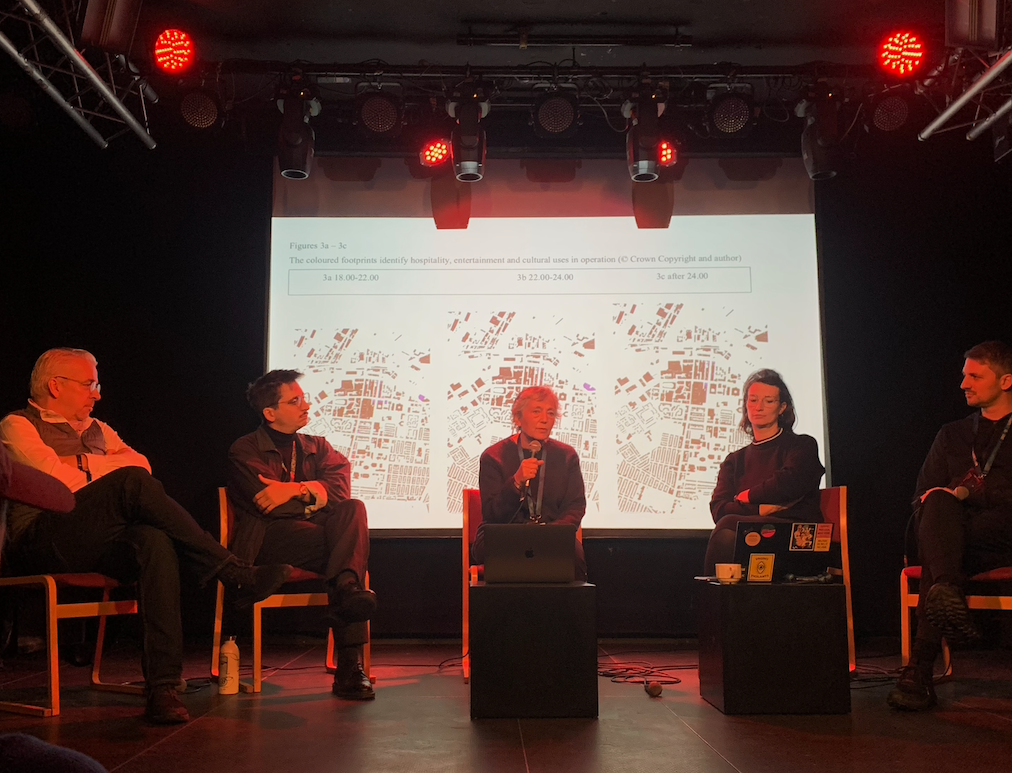Stadt Nacht Acht: Pioneering new standards for nightlife research

We identified what problems researchers face today and what can be done to solve them.
This year’s conference, Stadt nacht Acht, brought up new challenges and topics that club culture deals with today. We, VibeLab, hosted a panel that uncovered what barriers researchers have when it comes to data collection in nighttime research and what can be collectively done to pave the path for future generations.
Pioneering EU standard for nighttime research
To discuss the research challenges we face today, we invited Audrey Guerre, the coordinator of Live DMA; UCL academic Alessio Koliulis; Klaus Goldhammer, Managing Director at Goldmedia GmbH; and Marion Roberts, an academic from the University of Westminster.
During a session moderated by Lutz Leichsenring, we delved into the struggles inherent in quantitative research, often characterized by its high expense and time-consuming nature. We also discussed what could be done on a European level to make this exploration more accessible.
Speakers highlighted the need for more crucial public data on cultural segments and the prevailing biases within the available data. This often leads researchers to seek out this information or create new categories to complete their original research. But this pressure on researchers can go both ways and bring unique possibilities or chaos.
Seeking for nonexisting data can go both ways.
“We did something that has not been done before, and in the Creative Footprint study, we were not just looking into nighttime venues with the available data. We went into the neighbourhoods and spaces, mapped them, and looked into what was happening inside. Looking into these data now, we see fascinating phenomena. There is a correlation between well-educated young people, public transportation, and music venues. If you want to be a city of the future and well-educated people, you must have good public transportation and nighttime venues,” said Leichesenring.
Guerre, on the other hand, contributed to the discussion with another point of view.
“The problem, for example, is that the venues are not necessarily listed in the same categories from one country to another at the national level. So, when conducting research, you don’t know that this data category includes everyone you need to include. For instance, we don’t even have a definition of a live venue,” said Audrey Guerre.
“It’s a game of influence. Sometimes, you find out that the indicators you initially created in your report are used by someone else but not necessarily correctly. For example, in one of our studies, we classified what a small, medium, and large venue is.
What we also do, is that we often advocate on the EU level for supporting tiny music venues. They once issued a funding call for small venues, and the criteria for what a small venue is were taken from our report. But the indicator was making sense only in our report, not for the funding call,” continues Guerre in another take on what collecting data that were never collected can cause.
Speakers agreed that standardisation of data, criteria, and categories at the European level could significantly benefit researchers and cultural institutions because this standardisation would offer a more cohesive and reliable framework for analysis and possible decision-making.
Interested in finding out more about Pioneering an EU Standard for Nightlife? Register here
